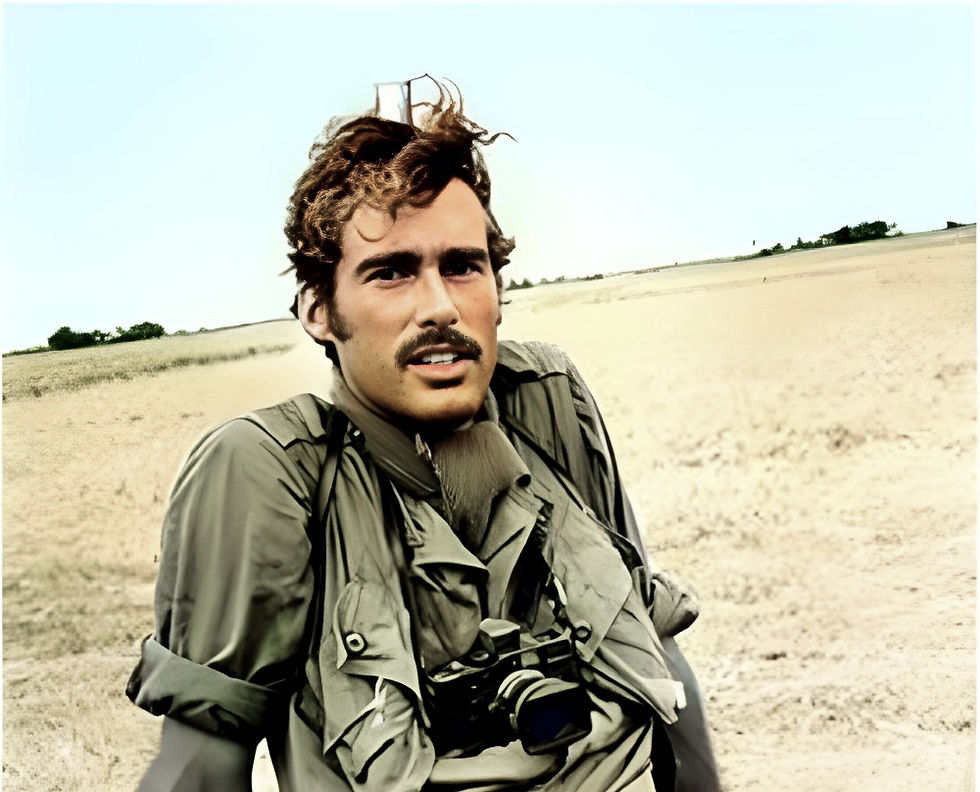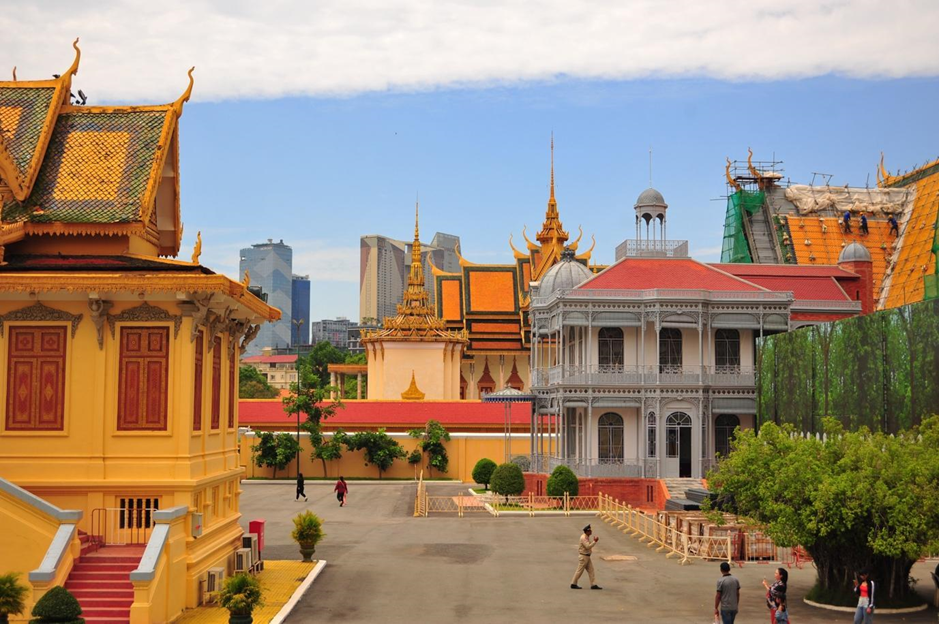Cambodia & Khmer Rouge: The tragic fate and legend of Sean Flynn
- Editorial team

- Oct 6
- 4 min read
The name Sean Flynn immediately conjures up a double legend: son of the legendary actor Errol Flynn, hero of the adventure films of Hollywood's golden age, and intrepid photojournalist who mysteriously disappeared in the middle of the fighting in Vietnam. His story, a blend of glamour, action, bravery and tragic disappearance, still fascinates journalists, historians and adventure enthusiasts today.

This story traces the extraordinary life of Sean Flynn and the decades-long investigation by his close friend, British photographer Tim Page, against a backdrop of war, disappearance and the search for truth.
An heir to the silver screen between light and shadow
Sean Leslie Flynn was born on 31 May 1941 in Los Angeles. The only son of the Australian-American actor Errol Flynn, famous for his legendary roles such as ‘Captain Blood’, and the Franco-American actress Lili Damita, he grew up in an atmosphere that combined Hollywood glitz and family tensions. His parents separated when he was still an infant, and he was raised mainly by his mother in Palm Beach, Florida. After studying at prestigious schools such as Lawrenceville School and then Duke University, he first embarked on an acting career, following in his father's footsteps, playing the lead role in ‘Son of Captain Blood’ (1962).
However, this career did not fully satisfy him. Attracted more by adventure and the reality of the world than by film sets, Sean Flynn began a radical transformation in the mid-1960s, gradually moving away from cinema to devote himself to photojournalism. He left for Africa, where he worked as a gamekeeper in Kenya, before embarking on an adventure that would take him to the very edge of the Vietnam War, the territory where he would find his true calling.
The reporter at the heart of the war
From 1966 onwards, Sean Flynn became a well-known war photographer, under contract to prestigious magazines such as Paris Match and Time. Renowned for his courage and daring, he immersed himself in the most dangerous areas of the conflict, escorted by American special units and often operating in forbidden zones, determined to capture images that others refused to risk in order to obtain. He proved to be an excellent shot, a seasoned survivalist able to survive in the most hostile jungles.
His reporting style blends adrenalin with an exceptional human capacity to capture the suffering, fear and determination of combatants - be they soldiers, guerrillas or civilians. His photographs emanate a poignant truth that goes beyond the simple illustration of military facts. However, this personal quest for authenticity was accompanied by terrible risks.
The tragic disappearance in Cambodia and Dana Stone
On 6 April 1970, as the war extended into Cambodia, Flynn and fellow photographer Dana Stone were arrested by Communist fighters as they moved through a hostile area. They disappear without a trace, triggering a long series of fruitless searches and investigations into their fate. Despite scattered rumours of prolonged captivity, witnesses and intercepted documents indicate that they were probably executed between 1970 and 1971, in Kampong Cham province.
Their disappearance became one of the most poignant mysteries of twentieth-century war journalism, and a tragic illustration of the price paid by those who cover armed conflicts.
Tim Page's investigation: an obsessive quest
Among those committed to solving this enigma is Tim Page, a British photographer and close friend of Sean Flynn. Their friendship, born in the streets of Saigon where they shared a flat and a passion for adventure, developed into an unbreakable camaraderie, marked also by their shared taste for danger and even sometimes excess, since they also lived for ‘adrenalin and adventure’.
After Flynn's disappearance, Tim Page began an obsessive quest to find his friend, multiplying expeditions into the Cambodian jungles, braving mines, guerrillas and other dangers. For more than twenty years, he worked to gather testimonies, clues and evidence, collaborating in particular with American military units specialising in the search for the missing. His passionate commitment made him one of the few people who never gave up hope of a discovery, despite the harsh realities of the conflict and the passage of time.
However, this quest is not without controversy. Another researcher, Zalin Grant, a former investigator, is also interested in the disappearance, but the rivalry between Grant and Page is fuelling debate and accusations. As Linnett, a close voice of Tim Page, recounts, Grant has sometimes accused Page of monetising his discoveries, something that Tim Page has always vigorously denied. An expedition led by Page's former assistant, Dave Macmillan, in 2016 is said to have recovered bones attributed to Flynn, but the brutal method used to excavate the site has been strongly criticised by Page, who speaks of desecration and betrayal.
An immortal legend
The story of Sean Flynn is not simply a tale of disappearance in a deadly war. It is also the story of a man who, despite a family environment marked by fame and the shadow of his father, was able to carve out a unique path through passion and bravery. His work, made up of images taken as close as possible to the conflict, continues to bear witness to the war from an uncompromisingly human angle.
The mystery of his end remains to this day a tragic symbol of the sacrifices of war journalism. But the commitment of Tim Page and other witnesses perpetuates his memory, nourishing both reflection on these conflicts and respect for those who report the truth, sometimes at the ultimate cost.
Sean Flynn remains in the collective memory as a modern adventurer, marked by the spotlight of his origins, and the shadows of a bloody world into which he chose to plunge, right to the end.







Comments